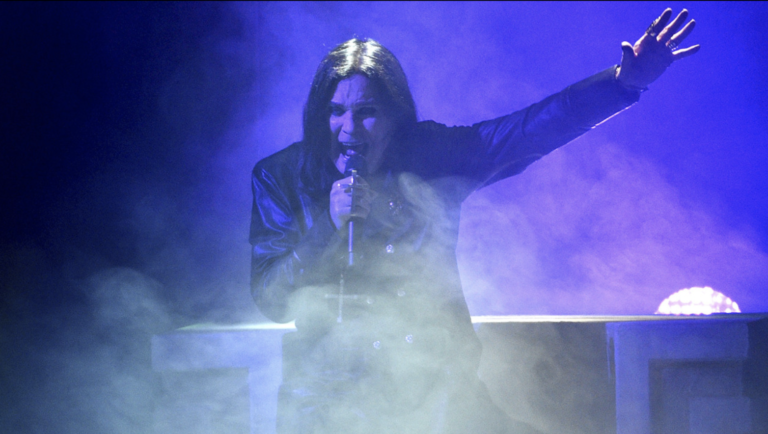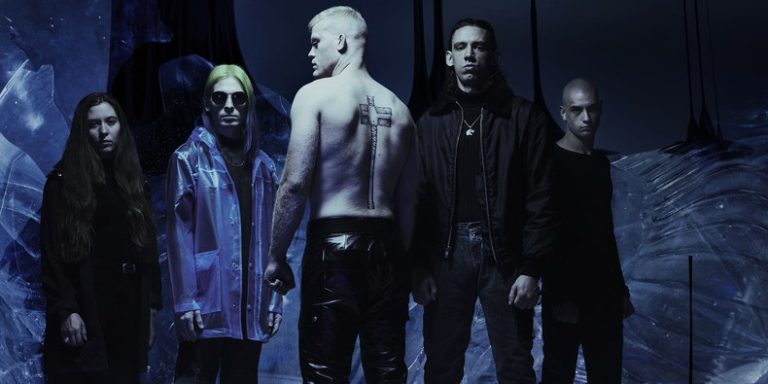INJURY RESERVE: CODE ORANGE–ENDORSED RAP TRIO
“We’re not this punk-rap group. No. This is a rap group. This is hip-hop music,” proclaims Ritchie With a T, one of Injury Reserve’s three members. It sounds like an unnecessary distinction to make — at least until you hear their music.
Injury Reserve’s sound is sleek and modern, with Parker Corey deploying off-kilter rhythms, unusual melodies and distorting effects. Yet Ritchie With a T and Stepa J. Groggs’ raps are coolly delivered, full of lyrical nuance but decidedly shorn of any vocal eccentricities. The net effect can be disorienting, with listeners left to decide whether Injury Reserve is simply wandering off the mainstream path — or trying to chart a different path apart from hip-hop altogether.
They’re the latest manifestation of an indie scene that has percolated since the end of the Aughts — when artists stopped walling themselves off from mainstream rap and pop, opting to twist those influences into their own idiosyncratic style — and fully bloomed into view with the arrival of Lil B, Odd Future and others.
You can hear the products of that quiet revolution on the group’s self-titled debut for Loma Vista Recordings — the taste-making label that’s also home to Marilyn Manson, Denzel Curry, St. Vincent, HEALTH and more. Ritchie calls Injury Reserve’s aesthetic somewhere between “extremely far to the left” and “extremely mainstream,” a sound that splits the difference between the vaporous, spacey Afro-surrealism of acts like Shabazz Palaces and clipping., and the punchy, jaundiced rhymes of Vince Staples and J.I.D. There’s “GTFU,” a track with the punkish rap iconoclast JPEGMAFIA. (“He’s a rock star,” says Ritchie.) Another cut, “Wax On” features Gary, Indiana, rapper Freddie Gibbs, a self-described thug known for his openness to collaborate with innovative acts like Injury Reserve.
An in-the-works collaboration with hardcore heavyweights Code Orange may take their sound into altogether new territory. “Injury Reserve, to me, represents creativity in hip-hop in the same way I aspire to in heavy music,” says Code Orange bandleader Jami Morgan. “They have managed to walk the tight rope of maintaining the soul of what hip-hop is with poignant lyrical content, while remaining on the forefront of pushing the boundaries with insane vocal delivery and cutting-edge production. I met them through our mutual respect for each other’s music and we see eye to eye on many levels. … I think we are gonna help bridge the gap between what we do and hip-hop in a way that can be innovative and is not just recycling the same tired ideas.”
Such against-the-grain cross-pollination might not always go down easy, but Injury Reserve are used to their music sometimes being met with confused, slack-jawed faces. Says the taciturn Groggs, “Our music makes people uncomfortable because people can’t put it in a category.”
Category-defying case in point: Injury Reserve cut “Jawbreaker,” where Groggs, Ritchie and guest Rico Nasty satirize hypebeasts and athleisure fanatics. The song opens with chimes that sound like dripping rain, and a distinct lack of bass drums keeps the track off-balance. Andy Phipps from Phoenix indie band Pro Teens sings, “How come you staring like you don’t know what it’s for?/Get your shit together, get your jaw up off the floor.” Meanwhile, Rico Nasty, a fiery rapper known for her high-adrenaline flow, cleverly shifts gears, riffing on how she “breaks jaws” by subverting our expectation of her. “You know that you’re a black girl, right?/You know that your hair is supposed to be sewed in, not spiked up?/I do whatever I want, not whatever gets the likes up/They don’t like my outfit but they like the outcome.”
“A lot of people pigeonhole her as some type of anger and aggression rapper,” Ritchie enthuses. “But you can tell when someone has got something to say.”
Citing maverick hip-hop icons like A Tribe Called Quest, De La Soul, 2Pac and Kanye West as heroes (“Our endgame is OutKast,” says Corey), Injury Reserve developed their unconventional sensibility in an unlikely place: Phoenix, Arizona, where the most well-known rapper in the city until now was Philadelphia transplant and nerdcore star Mega Ran. In prior interviews, the trio asserted that “there was no real scene” in Phoenix. Now, more mindful of the numerous performers striving to make art in their hometown, they’ve grown more nuanced in their assessments. (Ritchie and Corey currently live in Los Angeles, while Groggs moved back to Phoenix to be with his family.)
“We’ve had a lot of issues with this topic because we’ve been brutally honest,” explains Ritchie. “There’s a difference between rapping in a city and a scene. There’s always going to be people rapping in a city, with a few shows of people rapping together and supporting each other.” Part of it appears to be generational: “It was being led by an older group of people … but they definitely had an opinion on what rap music was.” If Phoenix’s hip-hop community was dominated by old heads still stuck in the backpack era, Injury Reserve resolved to move forward into a chaotic, internet-mediated present that’s no longer regulated by geography.
Ritchie moved to Phoenix from San Diego when his mother, an executive with Vans, opened a store there. Groggs was one of the first employees at the store. “He’s a little bit older than me, so I always looked up to him as a role model, and we were both new to the area,” says Ritchie. “He was really into music, and he was sending my mom home with CDs for me to listen to.” Separately, Ritchie met Corey through a mutual acquaintance, and the two completed what he calls a “really bad high-school mixtape.”
The three slowly coalesced over months of chop sessions into a group. They memorably recorded their 2015 debut, Live From the Dentist Office, at the office of Corey’s father. “We were all just going there, five days a week, just fucking around,” he says, chuckling at the memory.
Eschewing the write-to-the-beat format deployed by most rappers, the trio recorded vocals, leaving Corey to weave and blend their voices within the beats, much as New York producer Allstar would remix vintage soul with Nineties rap and R&B club hits. The studied contrasts between Ritchie and Groggs’ restrained vocals and Corey’s innovative production techniques reached its apotheosis in 2017’s Drive It Like It’s Stolen and recent singles like “Jailbreak the Tesla,” where the rappers join guest Aminé in imagining ways to hack $100,000 cars.

photograph by Matt Kaplan
If the reception to Injury Reserve is any indication, they may have to jailbreak a Tesla before they can afford one. Critical reception so far has been polite but muted. The trio has found their biggest acclaim among the messageboard kids who buoyed their rise, turning vinyl editions of The Dentist Office Series (a package of their first and second albums, Dentist Office and 2016’s Floss) into $200 collectibles. Gen Z gets it, even though dyed-in-the-wool rap heads may struggle to follow along.
“I think we’ve all figured it out at this point that if we stop changing it up a little bit and gave time for people to catch up, we might be able to see some more success,” says Corey. “But we’ve just kept on pushing because the music would start to feel stale if we weren’t just letting it flow.”




